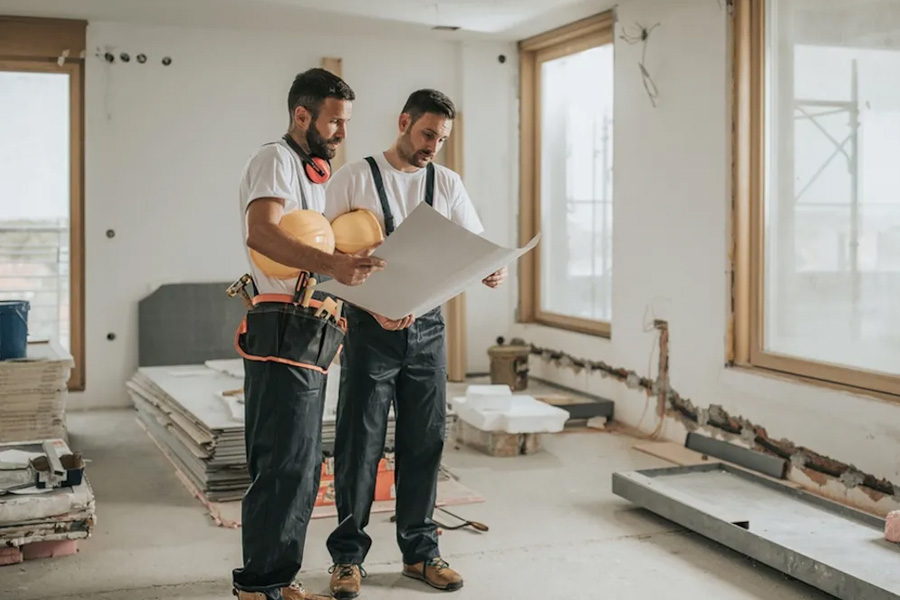Decorating Ideas to Transform Your Space

Image Source: www.watdgroup.ca
Creating a beautiful living environment begins with thoughtful design choices that reflect personal style. Many homeowners seek fresh inspiration to revitalise their interiors without undertaking major renovations. This comprehensive guide offers professional insights to help transform any space.
The article explores various approaches to home improvement, from budget-friendly solutions to sophisticated design techniques. Successful interior transformation combines creativity with practical considerations, ensuring spaces are both aesthetically pleasing and functional.
Readers will discover actionable ideas across multiple categories, including furniture selection and decorative finishes. The guidance draws from professional interior expertise and real-world examples from beautifully designed homes.
Transforming a living area doesn’t always require substantial investment. Thoughtful planning and creative implementation of design principles can achieve remarkable results. This resource provides the foundation for making informed decisions about home enhancements.
Key Takeaways
- Personal style and functionality should guide all design decisions
- Various approaches are available to suit different budgets and preferences
- Successful spaces balance aesthetic appeal with practical considerations
- Professional insights can help avoid common decorating mistakes
- Substantial investment isn’t always necessary for noticeable improvements
- Creative planning often yields better results than expensive purchases
- Multiple categories of ideas will be explored throughout the guide
Creative Ways to Utilise Patterns and Colour
Patterns and colour combinations can dramatically alter the perception and atmosphere of any interior space. These elements serve as powerful tools for creating visual interest and establishing room mood. Strategic application transforms ordinary areas into cohesive design schemes.
Bold Wall Panelling Ideas
Wall panelling adds architectural dimension to plain surfaces. Interior designer Cat Earp demonstrated this in a Dorset farmhouse bathroom. She used affordable, moisture-resistant MDF for tongue-and-groove boarding.
This approach provides a cost-effective alternative to traditional tiles. The material is durable and easy to paint. It performs well in humid environments where natural timber might struggle.
Panelling can be painted in various colours to complement existing décor. This technique offers both aesthetic appeal and functional durability.
Innovative Picture Framing Techniques
Creative framing solutions transform standard walls into gallery displays. Thoughtful arrangement creates visual impact without major investment. Molly Mahon’s approach demonstrates this principle beautifully.
When her East Sussex cottage’s stone fireplace felt too heavy, she added Bloomsbury-inspired patterns with paint. This decorative painting technique modified a feature that would be expensive to replace. It shows how paint can disguise imperfections and revitalise existing elements.
Combining patterns with strategic colour choices creates remarkable transformations. These methods prove that substantial investment isn’t always necessary for noticeable improvements.
Innovative DIY Furniture Upgrades
Budget-conscious upgrades to existing furniture can yield remarkable transformations without substantial investment. DIY techniques offer professional-looking results while keeping costs manageable. This approach allows homeowners to refresh their spaces creatively.
Paint stands out as one of the most affordable ways to revitalise tired furniture. A simple coat can transform outdated pieces into striking statement items. Proper preparation ensures long-lasting, quality finishes.
Customising Existing Pieces on a Budget
Many stylish homes incorporate budget-friendly furniture from retailers like IKEA. These pieces often appear either in their original form or with clever customisations. A quick Instagram search of #ikeahacks reveals over 700,000 posts showcasing creative transformations.
Identifying which furniture deserves upgrading versus replacement helps make cost-effective decisions. Solid construction and good proportions typically indicate pieces worth refreshing. Simple techniques like hardware replacement or fabric updates can breathe new life into old items.
Successful furniture upgrades require careful planning and proper preparation. Viewing existing pieces as potential canvases for creative expression often yields better results than immediate replacement. This mindset transforms the approach to home decorating.
Repurposing and Salvaging for Unique Home Pieces
Repurposing salvaged materials introduces unique character and history into a home that new items simply cannot replicate. This approach transforms discarded objects into functional art, creating a space with a story. It is a sustainable and cost-effective method for acquiring distinctive pieces.
Salvage yards and architectural reclamation centres are excellent sources for these materials. They offer a wealth of options, from timber to hardware.
Mixing Timbers for a Rustic Look
Combining different woods creates visual depth and a rustic charm. The contrast between dark tropical hardwoods and lighter, golden maples is particularly effective. Using unfashionable or salvaged timbers from various periods results in a more varied and interesting aesthetic than uniform new materials.
Photographer Steve Lazarides’ kitchen showcases this beautifully. Iroko wood was inlaid with old parquet panels to create large cupboard doors. Salvaged strips of teak were also used to enhance the tiled floor.
Transforming Old Cabinet Doors into Art
Old cabinet doors can be reinvented as central features. In Lazarides’ sitting room, a new wooden wall unit was crafted. It combined hand rails as drawer fronts with sea defence timbers and old cabinet doors.
Glazed cabinet doors also make excellent, cost-effective frames for artwork or cherished items. Flipping the backs of vintage frames to reveal historical annotations adds another layer of character. This method turns a functional piece into a display feature.
Comparison of Salvaged Material Sources
| Source Type | Common Finds | Best For | Considerations |
|---|---|---|---|
| Architectural Salvage Yards | Doors, floorboards, panelling, fireplaces | Large structural pieces with historical detail | Often requires cleaning/restoration; can be heavy |
| Online Marketplaces (e.g., eBay) | Vintage hardware, small furniture, frames | Individual accents and smaller projects | Quality assessment can be challenging; check seller reviews |
| Local Reclamation Centres | Timber, bricks, tiles, plumbing fixtures | Authentic materials for period homes or rustic looks | Stock varies; building a relationship can lead to finds |
Maximising Small Spaces with Stylish Solutions
Smaller homes present a unique opportunity to create highly efficient and intimate living environments. The key lies in choosing pieces that serve multiple purposes and planning layouts that enhance flow. This approach ensures every part of the room contributes to a comfortable and functional living experience.
Dual-purpose Furniture Options
Investing in versatile furniture is crucial for homes where space is limited. A sofa bed transforms a living area into a guest room instantly. An ottoman with hidden storage offers both seating and a place for blankets.
These multi-functional items prevent clutter and maximise utility. They allow a single room to adapt to different needs throughout the day.
Comparing Dual-Purpose Furniture for Compact Spaces
| Furniture Type | Primary Function | Secondary Benefit | Ideal Room Placement |
|---|---|---|---|
| Sofa Bed | Seating | Guest sleeping accommodation | Living room, study |
| Storage Ottoman | Footrest/Seating | Concealed storage for items | Living room, bedroom |
| Murphy Bed | Sleeping | Frees up entire floor space when not in use | Bedroom, studio flat |
| Nesting Tables | Surface area | Compact storage; flexible arrangement | Living room, small lounge |
Efficient Storage and Layout Ideas
Strategic use of the floor plan is essential. Kitchens and bedrooms need clear floor space for movement. In a living room, however, a large, L-shaped sofa can fill the area comfortably without wasting space.
For children’s bedrooms, box beds and bunk beds are excellent. They keep the sleeping zone compact, freeing up valuable floor space for play.
Do not overlook landings and hallways. These transitional spaces are perfect for a small bench or reading nook. They provide areas for casual conversation without cluttering main rooms.
Thoughtful decorating makes small spaces feel larger and more organised. Clever furniture placement guides traffic flow and creates a sense of openness.
Enhancing Interiors with Affordable Decorative Painting Techniques
Decorative painting techniques offer an exceptionally budget-friendly route to revitalising a home’s interior. A fresh coat of paint can disguise imperfections and modify features that would be costly to replace.
This approach to home decorating unlocks the history within a building’s layers. Skirting boards and doors with accumulated paint can be sanded irregularly. This reveals the myriad colours beneath, creating a unique, marbled effect.
Tips for Revitalising Woodwork and Feature Walls
In Victorian houses, a dominant marble fireplace can dictate the entire room’s scheme. An innovative solution involves painting the fireplace the same colour as the surrounding walls. This visually integrates the feature, inspired by artist Veruschka’s technique of blending with her environment.
Creating a successful feature wall requires thoughtful colour selection. The chosen hue should complement existing décor while adding depth. Proper surface preparation is crucial for a professional, long-lasting finish.
Guide to Paint Finishes for Different Surfaces
| Surface Type | Recommended Finish | Key Advantage | Ideal Room |
|---|---|---|---|
| Woodwork (Doors, Skirting) | Eggshell or Satin | Durable and easy to clean | Hallways, Living Rooms |
| Feature Wall | Matt or Emulsion | Minimises light reflection, hides imperfections | Bedrooms, Studies |
| Fireplace (if painted) | Heat-Resistant Paint | Safety and durability | Living Room |
| Furniture | Chalk Paint or Specialist Furniture Paint | Good adhesion, often requires minimal prep | Any Room |
The Role of Textiles and Tapestries in Home Décor
Beyond their aesthetic appeal, textiles serve as clever tools for solving common design challenges. They introduce texture, colour, and narrative depth to a space with remarkable versatility.
This approach to home enhancement is both practical and rich with character.
Using Tapestries to Cover Imperfections
Tapestries are an excellent choice for historic buildings with uneven walls and exposed beams. In a Suffolk farmhouse, a 19th-century French verdure tapestry creates a captivating focal point.
It elegantly conceals irregularities while adding a layer of historical interest. Hanging a large textile is often simpler than mounting multiple framed pieces.
This method minimises fixings into delicate plaster walls. Textiles offer a cost-effective alternative to traditional art, avoiding the fuss of coordinating multiple pictures.
Creative Methods to Incorporate Fabric Accents
Fabric accents can be incorporated creatively throughout the home. Repurposed rugs make superb, hardwearing covers for the headboard of a bed.
They are available in countless patterns that can inspire a room’s entire colour scheme.
In an Umbrian farmhouse, a crewelwork panel on the headboard was the starting point for the room’s design. The textile fragment held stories within its fibres, informing decorative choices.
This demonstrates how a single fabric accent can provide a cohesive foundation for a space. It adds meaning beyond mere visual appeal.
Creative Wall Art and Framing Solutions
Gallery-quality wall presentations can be achieved through resourceful framing solutions that bypass professional costs. Many homeowners overlook the potential of unconventional materials and repurposed finds when creating impactful displays.
Repurposing Antique Frames
Charity shops and antique fairs offer hidden treasures for the discerning shopper. Visitors often focus on the art itself, missing excellent frames paired with uninspiring content.
These overlooked frames can be repurposed for personal picture collections. The approach delivers substantial savings compared to custom framing services.
Textiles present another affordable alternative to traditional wall art. Even small fabric pieces like scarves or tea towels become statements when properly mounted. A generous mount and quality frame elevate modest materials into sophisticated displays.
Cost-Effective Framing Alternatives
| Material Source | Potential Cost Saving | Best For | Preparation Required |
|---|---|---|---|
| Charity Shop Frames | 70-90% vs new | Traditional artwork, photographs | Cleaning, possible refinishing |
| Vintage Textiles | 60-80% vs commissioned art | Large statement pieces, colour accents | Mounting, framing with UV-protective glass |
| Wallpaper Samples | 85-95% vs original art | Cohesive room schemes, pattern introduction | Minimal – ready for framing |
| Unframed Quilts/Robes | 100% framing cost saving | Textural interest, heritage pieces | Simple hanging system |
A home without personal art feels incomplete. Creative thinking transforms everyday objects into legitimate wall décor. This approach makes quality displays accessible to all budgets.
Employing Wallpaper to Add Visual Interest
Wallpaper introduces a unique dimension to interior design that paint alone cannot replicate. It brings personality to homes through intricate patterns, textures, and colours.
A cost-effective approach involves strategic placement on a single feature wall. This delivers maximum impact without the expense of covering an entire room.
Feature Walls and Accent Areas
Using a picture rail is a clever trick. It reduces the amount of wallpaper needed and creates visual breathing space. This technique is ideal for budget-conscious decorating.
Architectural features also benefit. Interior designer Jodie Hazlewood highlighted a pitched ceiling by papering it with a dramatic pattern. This transformed a often-ignored space into a key feature.
For renters, painter Trix Breuls demonstrated a brilliant alternative. She created a faux tiled wall with paint, achieving a similar effect without permanent changes. Explore more creative approaches to using wallpaper to add interest and in any space.
Selecting the right pattern is crucial. Bold designs suit larger areas, while subtler patterns work well in compact rooms. The goal is a cohesive look where the featured wall complements other décor elements.
This proves that significant visual impact does not require covering every surface. Strategic use makes wallpaper an accessible and powerful tool for transformation.
Mixing Traditional and Contemporary Design Elements
Interior design that stands the test of time rarely adheres strictly to one era. Instead, it finds a compelling harmony between old and new. This approach creates homes that feel both deeply rooted and excitingly current.
The most engaging spaces mix the pedigree of traditional design with the playfulness of modern accents. This creates a sophisticated friction that makes rooms feel interesting and eclectic.
Balancing Classic Features with Modern Accents
Successful blending involves confident choices. Pair an elaborate ceiling rose with a sleek, contemporary pendant light. Place a classic, traditional bed against a wall with bold, punchy upholstery.
Interior designer Christie Ward masterfully incorporated personal stories into her work. For one project, she designed a marble-patterned floor tile inspired by a Roman church floor. This was a subtle nod to the clients’ engagement in Rome.
Features with sentimental value or a personal connection have remarkable longevity. Homeowners are far less likely to tire of a design element that holds meaning.
Guidance for Mixing Design Eras
| Traditional Element | Modern Counterpart | Resulting Effect |
|---|---|---|
| Ornate picture rail | Minimalist abstract art | Highlights architectural detail while adding a fresh focal point. |
| Period fireplace | Simple, streamlined hearth furniture | Allows the classic feature to shine without visual competition. |
| Wooden floorboards | Geometric-patterned rug | Adds warmth and texture while introducing a contemporary pattern. |
| Vintage armchair | New, neutral-toned sofa | Creates a balanced, curated look that avoids a “theme”. |
The key is to identify which traditional elements deserve celebration. Then, introduce contemporary pieces that complement rather than clash. This creates a cohesive and personally significant design.
Functional Yet Stylish Kitchen Decorating
The kitchen serves as the functional heart of a home, demanding a design that expertly marries practicality with personal style. This space requires clever solutions that enhance storage and workflow without sacrificing aesthetic appeal.
A successful approach often involves moving away from fully fitted units. Kitchens composed of individual elements feel more personal and lived-in.
Cabinet Upgrades and Innovative Storage Ideas
When existing cabinets are structurally sound but visually tired, consider creative updates. Instead of a costly replacement, refreshing the doors offers a budget-friendly alternative.
In her Gloucestershire kitchen, Vanessa Arbuthnott swapped some cabinet fronts for fabric panels. This simple change revitalised units that had stood for over twenty years.
For a truly unique interior, explore reclaimed pieces. A London kitchen features glazed mahogany cupboards once used by the V&A. The glass panels allow the display to evolve, proving the effectiveness of creative reuse.
Maximising storage does not require new units. Strategic sourcing can yield remarkable finds.
- Search local salvage yards for unique sinks and fittings.
- Monitor online marketplaces for free or low-cost items.
- Introduce freestanding islands or dressers for flexible storage.
This method allows for a kitchen that grows organically. It achieves high functionality and distinctive character without a substantial financial outlay.
Inspiring Ideas for Garden and Outdoor Spaces
A garden centre can be an unexpected source of inspiration for both indoor and outdoor styling. These spaces are rewarding hunting grounds for distinctive and affordable home furnishings.
The principles of good design extend seamlessly from the interior to the garden. Consider colour, texture, and functional layout to create a cohesive narrative.
Charming gardening tools make excellent decorative accessories. Items like cast-iron scissors, brass thermometers, and slate plant labels add character when dotted around the home.
Creative repurposing offers unique solutions. An old garden sieve, for instance, can be transformed into a whimsical wall-mounted vase for floral displays.
When selecting things for outdoor use, prioritise weatherproof materials. This ensures longevity while maintaining aesthetic appeal. Outdoor spaces provide just as much opportunity for personal expression as rooms inside.
Garden Centre Finds for Indoor and Outdoor Use
| Item | Outdoor Function | Indoor Decorative Use | Key Consideration |
|---|---|---|---|
| Terracotta Pots | Plant containers | Hold kitchen utensils, display dried flowers | Ensure drainage holes are covered for indoor use |
| Brass Weather Instruments | Measure conditions | Shelf ornament, adds a vintage feel | Polished brass may tarnish outdoors |
| Garden Sieves | Soil sifting | Wall art, unique fruit bowl | Clean thoroughly before repurposing |
| Natural Jute Twine | Plant tying | Wrapping vases, creating rustic garlands | Not suitable for prolonged wet conditions |
Embracing the Charm of Vintage and Antique Finds
Hunting for vintage and antique treasures offers a sustainable path to creating a home rich with character and history. This approach, championed by studios like Criss Design, values the unique stories and imperfections that aged pieces bring to a space. It moves beyond simple aesthetics to build a personal narrative within your house.
This philosophy aligns perfectly with the values often celebrated in publications like Country Living. It focuses on authenticity and soul, which mass-produced items frequently lack.
Finding Unique Pieces in Charity Shops and Markets
Charity shops and local markets are excellent starting points for a vintage hunt. Patient searching often reveals overlooked gems, from a single unique piece of furniture to quality picture frames. Shoppers frequently focus on the art, missing fantastic frames that can be repurposed.
Online platforms like eBay and Facebook Marketplace are also invaluable. They are brilliant for finding specific vintage and antique fixtures, such as cast iron radiators or reclaimed floorboards.
A success story involves a reconditioned AGA found on eBay for a Somerset cottage. This demonstrates that significant, characterful items can be acquired affordably. The key is persistence and a keen eye for potential.
Evaluating finds is crucial. Check for structural integrity and authenticity to ensure the piece is suitable for its intended use. Embracing this method of home decorating is not only sustainable but also guarantees a truly individual interior, a principle frequently highlighted in Country Living.
Practical Tips for Reusing and Repurposing Materials (Insights from Criss)
After any renovation project, leftover materials often accumulate unexpectedly. These off-cuts present excellent opportunities for creative touches rather than waste. The team at Criss champions this sustainable approach to home enhancement.
Their philosophy involves reimagining materials in completely different contexts. Old floorboards from one level might become distinctive wall panelling elsewhere. A simple paint application transforms their appearance entirely.
Maximising Off-cuts for Creative Touches
People frequently wonder how many spare materials they actually need to keep. Criss suggests that even small remnants can serve important purposes. Random elements often provide enough material for a kitchen splashback or decorative flooring insert.
Vertical applications offer another clever way to use off-cuts. Thin strips can run elegantly up joinery details. This approach adds visual interest while maximising every scrap.
The experts at Criss recommend keeping raw, uncut edges where possible. A rough marble edge or textile selvedge provides wonderful tactility. These natural finishes bring authentic character that manufactured edges cannot replicate.
This resourceful method delivers both environmental and economic benefits. Publications like House Beautiful regularly feature such innovative approaches. The principle also aligns with Country Living’s emphasis on authentic, soulful interiors.
Successful material reuse requires planning from the project’s outset. Identify repurposing opportunities before disposing of any remnants. With creative thinking, what seems like waste becomes a distinctive design element.
Fresh Decorating Trends for Modern Homes
Contemporary living demands flexible spaces that adapt to our daily routines. Modern trends reflect this need for practical yet beautiful solutions. They offer clever ways to enhance any home’s interior.
Internal windows and Crittall doors create visual connections between rooms. They improve natural light flow without removing entire walls. This approach maintains cosy areas while offering enticing glimpses into adjacent spaces.
Wall lights provide excellent ambient lighting without consuming surface space. They offer the same soft glow as floor or table lamps. This makes them ideal for smaller living areas where every inch counts.
Many homeowners are rethinking spare room usage. Instead of rarely-used guest bedrooms, dedicated dressing spaces offer daily value. They provide generous storage and become quiet sanctuaries.
For renters, temporary solutions like vinyl applications work beautifully. Writer Katherine Ormerod hand-applied 420 vinyl stickers in her Victorian bathroom. This created one of the most striking rooms in her Chiswick home.
These trends prioritise flexibility and multi-functionality. They solve practical problems while enhancing aesthetic appeal. A good designer can help identify which trends suit specific living situations.
The Impact of Lighting and Accessories in Transforming Space
Lighting and accessories provide the final transformative layer that elevates a space from functional to extraordinary. These elements work together to define the mood and character of any room. They are the finishing touches that complete an interior designer’s vision.
Using Mirrors to Amplify Natural Light
Strategic mirror placement is a powerful tool for enhancing light. It creates what designers call ‘twinkle’ by lifting and reflecting illumination. This technique makes rooms feel brighter and more spacious.
A glamorous London house demonstrates this beautifully. Wall units fronted with mirrors and a glazed mahogany cabinet island create a lovely play of light. Reflective surfaces are a cost-effective way to maximise natural light.
Strategic Lighting Placement for Ambience
Wall lights offer a chic and practical lighting solution. They provide a soft, romantic glow without robbing valuable surface space. This makes them ideal for compact living areas.
Designs are wonderfully versatile. They range from sleek mid-century articulated lamps to fluted brass sconces. Their affordability means they can be bought in pairs to flank a bed or sofa symmetrically.
Layering different light types creates flexible ambience. It allows a room to adapt for various activities throughout the day.
Comparing Lighting Types for Different Ambiences
| Lighting Type | Primary Function | Ideal Room Placement | Key Advantage |
|---|---|---|---|
| Wall Sconces | Ambient/Accent Lighting | Living room, Hallway, Flanking a bed | Saves floor and surface space; creates soft pools of light |
| Pendant Lights | Task/General Lighting | Kitchen island, Dining area, Above a sofa | Defines specific zones; strong visual statement |
| Floor Lamps | Ambient/Reading Light | Next to an armchair, Dark corner of a room | Flexible placement; adds height to a lighting scheme |
| Recessed Spotlights | General Illumination | Kitchen, Bathroom, Hallway | Clean, minimalist look; provides widespread light |
Beyond lighting, substantial greenery makes a significant impact. A large indoor tree creates a bold statement. It brings life and colour to a living space far more effectively than a small potted plant.
Thoughtful decorating with these elements ties colours and design into a cohesive scheme. They are the details that make a house feel like a home.
Conclusion
The journey to creating a personalised home environment is accessible through various creative approaches. This comprehensive guide demonstrates that transforming any house or interior space is achievable across different budget levels.
Successful decorating balances practical functionality with aesthetic aspiration. Key themes explored include the value of vintage finds and the transformative power of colour. These principles apply universally, from farmhouse kitchens to compact bathroom spaces.
Drawing inspiration from professional designer expertise and real-world examples empowers confident decision-making. Personal style should guide all choices, whether embracing bold colours or eclectic combinations.
Thoughtful attention to materials, textures and lighting transforms ordinary spaces into homes that reflect individual personalities. Every reader can approach their project with renewed confidence and practical knowledge.
FAQ
What are some creative ways to add colour to a room without repainting?
Incorporating colourful textiles, such as cushions, throws, and rugs, is an excellent method. Using vibrant artwork, statement furniture pieces, or even a bold wallpaper on a single feature wall can instantly inject colour and personality into a space without the commitment of a full paint job.
How can I make a small living space feel larger?
Employing dual-purpose furniture, like a sofa bed or an ottoman with storage, helps maximise functionality. Using mirrors to reflect light, choosing a light colour palette, and ensuring furniture is proportionate to the room’s size are all effective strategies for creating an illusion of more space.
Can you suggest budget-friendly ideas for upgrading kitchen cabinets?
A cost-effective upgrade involves repainting or repurposing existing cabinet doors. Adding new handles or knobs can provide a fresh look. For a more significant change, consider open shelving by removing some cabinet doors to display attractive dishware, which adds character and openness.
What is the best way to incorporate vintage finds into a modern home?
The key is balance. Introduce one or two standout vintage or antique pieces, such as a unique mirror or a sideboard, against a backdrop of contemporary furniture. This approach creates a curated, eclectic look that feels intentional rather than dated. Charity shops and markets are great sources for these unique items.
How can I use wall panelling to enhance a room?
Wall panelling adds texture and architectural interest. It can be used to create a sophisticated feature wall in a living room or dining area. Painting the panelling in a contrasting colour to the rest of the wall amplifies its effect, adding depth and a touch of classic elegance to the interior design.
What are some simple decorative painting techniques for a feature wall?
Techniques like colour blocking, where large geometric shapes are painted in complementary colours, can make a bold statement. Sponging or rag-rolling creates subtle texture, while a simple stripe pattern, achieved with painter’s tape, adds graphic interest with minimal effort.





